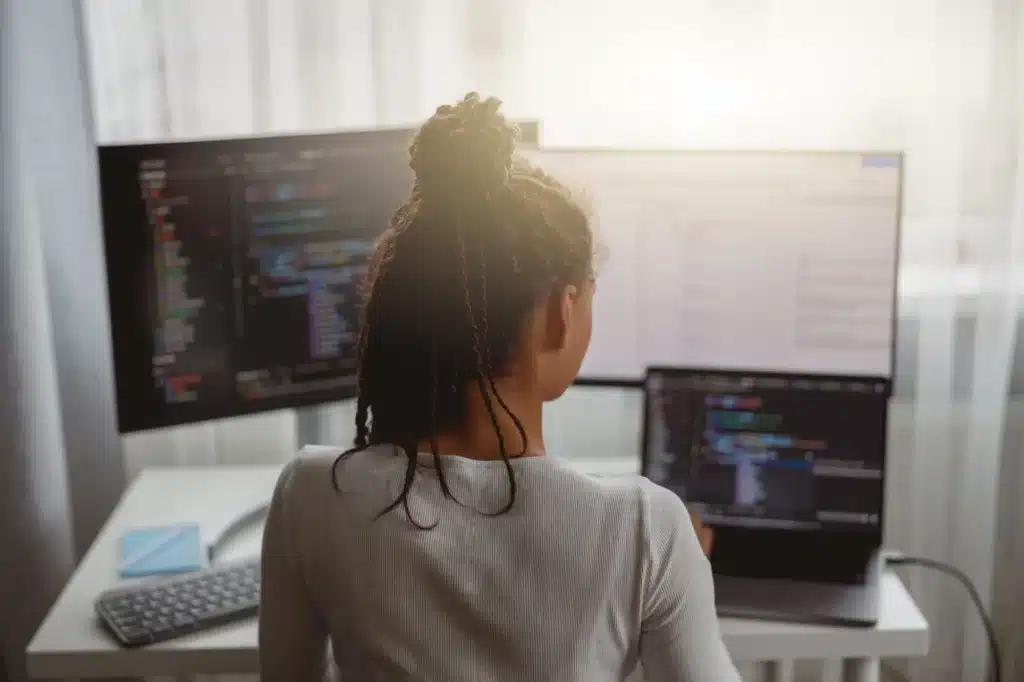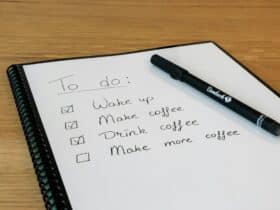Balancing work and life as a developer can be challenging in an industry demanding long hours and constant learning.
While the tech world moves rapidly, maintaining equilibrium is crucial.
By implementing effective strategies, you can excel in your career while nurturing your personal life and wellbeing.
Let’s explore practical approaches to achieve this delicate balance and reclaim your time outside work.
Set Clear Boundaries
To maintain a healthy work-life balance, you’ll need to establish clear boundaries between your professional and personal life. Start by setting specific work hours and sticking to them. When your workday ends, turn off notifications from work-related apps and emails. Create a dedicated workspace at home, separate from your living areas, to help you mentally shift between work and personal time.
Learn to say no to non-essential tasks or projects that might encroach on your personal time. Communicate your boundaries clearly to your colleagues and managers, ensuring they understand when you’re available and when you’re not.
Set realistic expectations for your workload and deadlines, and don’t hesitate to speak up if you feel overwhelmed. Prioritizing your well-being and personal life alongside your professional responsibilities is crucial. By establishing and maintaining these boundaries, you’ll create a more sustainable and fulfilling work-life balance.
Prioritize Tasks

Effective task prioritization is essential for maintaining a healthy work-life balance as a developer. To manage your workload efficiently, you should categorize your tasks based on their importance and urgency. Use a matrix like the one below to help you conceptualize and prioritize your tasks:
| Importance | Urgent | Not Urgent |
|---|---|---|
| High | Do now | Schedule |
| Medium | Delegate | Plan |
| Low | Minimize | Eliminate |
Focus on high-importance, urgent tasks first. These are indispensable for your work and require immediate attention. Next, schedule time for important but not urgent tasks, such as learning new skills or improving processes. Delegate medium-importance, urgent tasks when possible. For low-importance tasks, minimize or eliminate them to free up time for more essential activities. By consistently applying this prioritization method, you’ll be able to manage your workload more effectively, reduce stress, and create more time for personal life and professional growth.
Take Regular Breaks
Regular breaks are essential for maintaining productivity and preventing burnout in a developer’s day-to-day work. You should aim to take short breaks every hour or two, stepping away from your screen to rest your eyes and stretch your body. These pauses help refresh your mind and improve focus when you return to coding.
During your breaks, try activities that don’t involve screens, such as walking around the office, doing quick exercises, or practicing deep breathing.
It’s also important to take longer breaks for meals and to separate your workday into manageable chunks. Don’t skip lunch or work through it; use this time to recharge and mentally disconnect from work.
Engage in Physical Activity

Physical activity is a crucial component of maintaining a healthy work-life balance for developers, as it counteracts the sedentary nature of coding work. You should aim to integrate regular exercise into your daily routine.
This can include simple activities like walking, jogging, or cycling, or more structured workouts at a gym. Even short bursts of movement throughout the day can make a significant difference.
Consider using a standing desk or taking brief walks during breaks to reduce prolonged sitting. Engaging in physical activity not only improves your physical health but also enhances mental clarity and reduces stress.
It can augment your productivity and creativity when you return to coding tasks. Remember to choose activities you enjoy to increase the likelihood of sticking to your exercise routine.
Prioritizing physical activity will contribute to your comprehensive well-being and work-life balance.
Disconnect from Work
Developers’ ability to disconnect from work is crucial for maintaining a healthy work-life balance and preventing burnout.
To achieve this, set clear boundaries between work and personal time. Establish a dedicated workspace and stick to regular working hours. When your workday ends, physically leave your workspace and resist the urge to check emails or respond to work-related messages.
Develop a winding-down routine to signal the end of your workday. This could include closing all work-related tabs, shutting down your computer, or changing into comfortable clothes. Engage in activities that help you mentally shift from work mode, such as going for a walk, reading a book, or spending time with family.
During weekends and vacations, make a conscious effort to fully unplug. Turn off work notifications and avoid checking your work email. Instead, focus on personal interests and relationships.
Conclusion
You’ve learned strategies to balance work and life as a developer. While you might worry that setting boundaries will hinder your career progress, it’s actually essential for long-term success.
By implementing these techniques, you’ll improve your focus, productivity, and comprehensive well-being. Remember, it’s not about working harder, but working smarter.
Prioritize your tasks, take breaks, stay active, and disconnect when needed. With practice, you’ll achieve a healthier work-life integration and become a more effective developer.


















